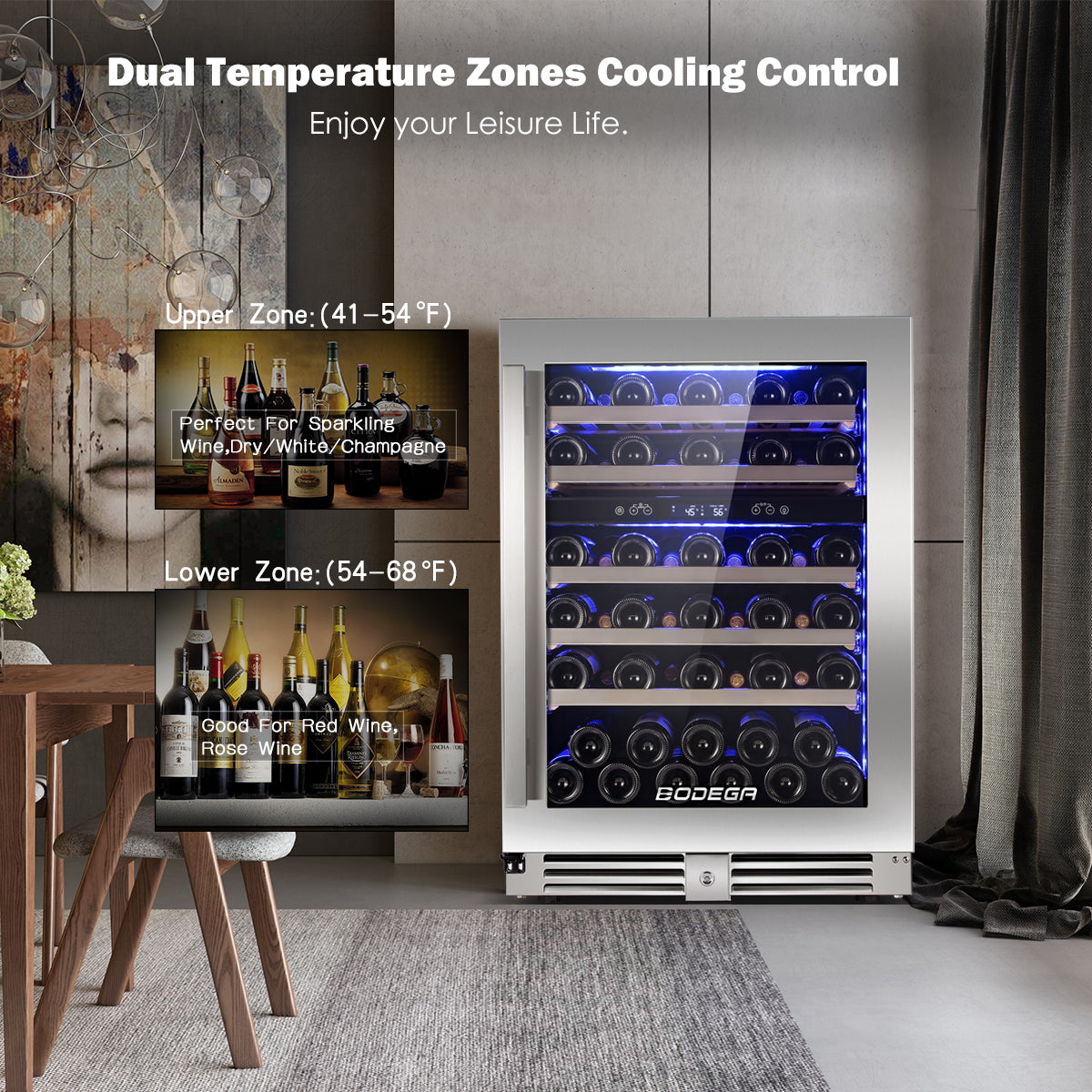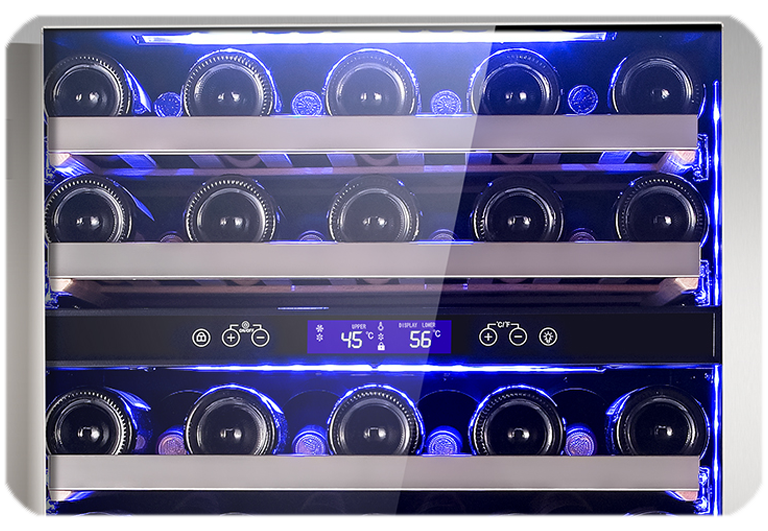Is your beloved wine fridge not cooling as it should? Don't fret; we've got you covered. In this guide, we'll walk you through the step-by-step process of troubleshooting and fixing a wine fridge that's not cooling properly. Let's dive in and get your wine collection back to the perfect temperature.

Temperature Fluctuations
1. Check the Power Connection
- Overview: Ensure your wine fridge is properly plugged in and that the power outlet is functioning.
-
Detailed Steps:
- Unplug the fridge and plug it back in to reset.
- Test the outlet with another device to confirm functionality.
2. Inspect the Thermostat
- Overview: The thermostat regulates the temperature. Incorrect settings can affect cooling.
-
Detailed Steps:
- Use a digital thermometer and record temperatures weekly.
- Adjust settings if you notice consistent variations.
3. Clear Ventilation Vents
- Overview: Blocked vents can hinder airflow, impacting the cooling process.
-
Detailed Steps:
- Remove any items obstructing the vents.
- Dust the vents and clean the fan for optimal performance.

4. Check the Door Seal
- Overview: A damaged or loose door seal allows cold air to escape.
-
Detailed Steps:
- Inspect the gasket for any visible damage.
- Close the door on a piece of paper; if it slips out easily, the seal may need replacement.
5. Examine the Condenser Coils
- Overview: Dirty coils reduce the fridge's ability to cool.
-
Detailed Steps:
- Locate the coils (typically at the back) and unplug the fridge.
- Clean the coils with a coil brush or vacuum.
6. Ensure Proper Ventilation Space
- Overview: Lack of space around the fridge can lead to overheating.
-
Detailed Steps:
- Provide at least 2–3 inches of clearance around the fridge.
- Avoid placing it near heat-producing appliances.
Read more: Do Wine Fridges Need Ventilation?
7. Inspect the Evaporator Fan
- Overview: The fan circulates air, and a malfunction can impact cooling.
-
Detailed Steps:
- Listen for fan sounds; if absent, it may need replacement.
- Spin the fan manually to check for any resistance.
8. Evaluate the Compressor
- Overview: The compressor is the heart of the cooling system.
-
Detailed Steps:
- Listen for a humming sound; if absent, the compressor may be faulty.
- If under warranty, contact the manufacturer for professional assistance.

9. Assess Refrigerant Levels
- Overview: Low refrigerant levels can hinder cooling.
-
Detailed Steps:
- Consult a professional technician to check and refill refrigerant.
- Avoid attempting this yourself, as it requires specialized equipment.
10. Consider Ambient Temperature
- Overview: Extremely high ambient temperatures can affect cooling efficiency.
-
Detailed Steps:
- Ensure the room temperature is within the recommended range for your wine fridge.
11. Implement Temperature Zoning
- Overview: Temperature variations within a fridge can affect different wine types.
-
Detailed Steps:
- Organize your wine strategically based on temperature needs.
- Place red wines closer to the cooling unit, where temperatures are slightly warmer.

12. Optimize Shelving for Air Circulation
- Overview: Proper air circulation around bottles ensures uniform cooling.
-
Detailed Steps:
- Avoid overcrowding shelves to allow air to circulate freely.
- Use wine racks that facilitate good air movement.
Conclusion
By following these comprehensive steps, you can troubleshoot and resolve issues with your wine fridge not cooling effectively. Remember, if the problem persists or involves complex components like the compressor, seeking professional assistance is advisable.
FAQs
1. Can I use a regular refrigerator for wine storage temporarily?
Answer: While possible, regular refrigerators may not provide the ideal conditions for wine storage, particularly the humidity levels.
2. How often should I clean the condenser coils in my wine fridge?
Answer: Cleaning every six months is a good practice, but more frequent cleaning may be necessary in dusty environments.
3. Is it normal for a wine fridge to produce some noise during operation?
Answer: Yes, some noise is normal, but excessive or unusual sounds may indicate an issue.
4. Can I repair a faulty compressor myself?
Answer: Compressor repairs are complex and best left to professionals. Attempting repairs may void the warranty.
5. What is the ideal temperature for storing red wine in a wine fridge?
Answer: Red wine is generally stored between 50°F to 65°F (10°C to 18.3°C), depending on personal preference.
Read more: What Temperature Should a Beverage Cooler Be Set At?







3 comments
Paul Boucher
I purchased the BODEGA JC-150WM about 1 year ago. The right side unit will not cool at all. I get a double EE on the control panel, there is no cooling and no fan at all. The left side unit does work. When I try and turn off just the right side unit, the entire refrigerator shuts down. Do you think I have a bad control panel on the left side?
Jonathon
I purchased a Bodega Wine Cooler Model JC-115DR this past January 2024. It quit working yesterday just being less than 10 months since purchase directly from your Bodega website. I’ve done all the troubleshooting as described in your manual and on your website. The unit will not operate at all with no lights or cooling. There is power from the outlet. I called your customer service and all they said was to email them a screenshot and video of the unit. They could not even look up my order number or details with my email address. Your manual says 24 hour service is available, but there’s no number to call to set up this service. I’m extremely disappointed and wish someone in the US would reach out and help. Thanks.
Jonathon Esarey, Kohler, WI
jonathoncesarey@gmail.com
Peter Mcgroarty
I bought the refrigerator two years ago and the beer side is not get cold can you help